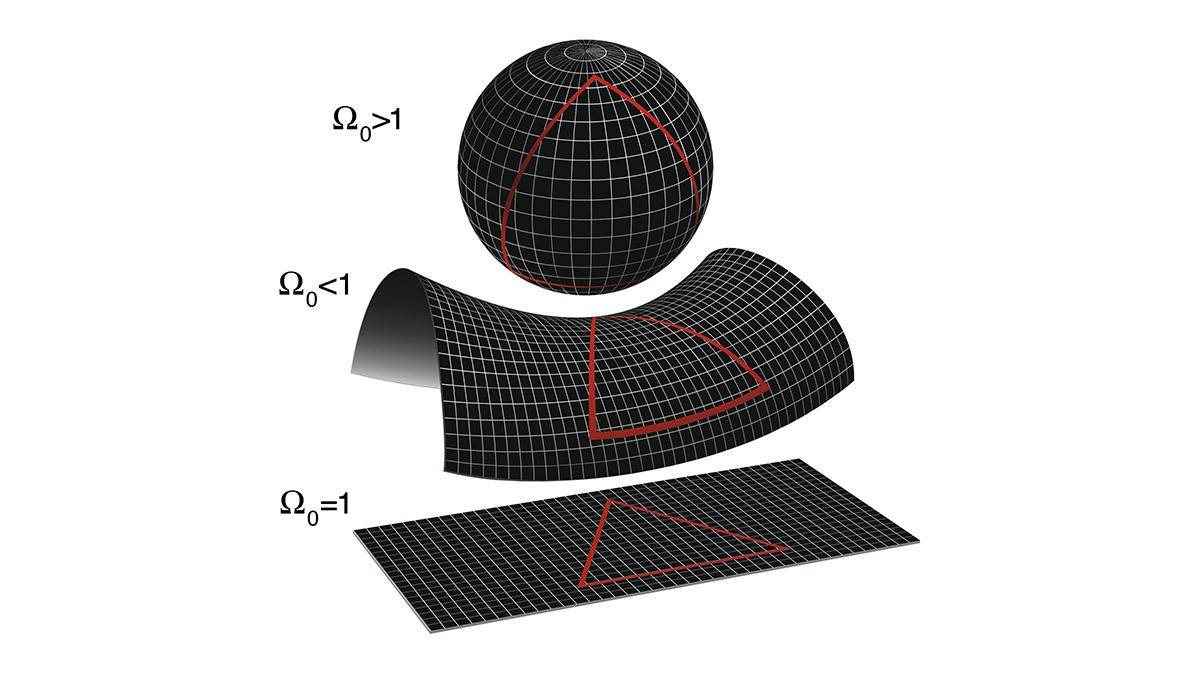why we’re stuck with dark energy

The universe seems like a very dark place. Ordinary matter that makes up stars, planets and the vast amounts of interstellar gases is less then 5% of everything in the visible universe. Some strange, unknown substance we call dark matter for now, takes up almost five times as much of the universe’s composition. And a staggering 73% of everything we know is actually an expression of dark energy, a phenomenon we know even less about than dark matter. While we’ve been able to produce a map of dark matter clusters based the effects of their gravity on nearby stars and galaxies, dark energy still remains an elusive beast the existence of which is being cast into doubt by two mathematicians.
Now, you might be wondering how dark energy can be unknown and yet account for almost three fourths of everything. The answer lies in the very complicated math behind the basic models of cosmology. Until astronomer Edwin Hubble found that the universe was in motion and expanding rather than the static place scientists thought it was, there was no need to consider anything as exotic as an invisible force that pushes galaxies apart. But it was possible in Einstein’s general relativity equations which could account for an expanding or contracting universe. To make sure that all of the cosmological models in these equations stayed static, Einstein added the Λ (lambda) variable in his formulas which gave energy to theoretical empty space, the so-called cosmological constant.
There was a little snag though. If the constant was positive or negative, the universe it represented would either have to undergo a runaway collapse or a runaway expansion, respectively. Since neither seemed to be happening but the universe wasn’t static, Einstein called the cosmological constant a massive blunder and abandoned it. Until the 1990s, it was just a theoretical toy for cosmologists. Then, when a survey tried to measure how fast the universe was expanding, it concluded that not only are galaxies flying apart, they’re flying apart at an accelerated rate. Using uniform type Ia supernovae as yardsticks to find the relative distance between us and target galaxies, astronomers saw that the objects were too dim and too far away to match up with the results predicted by formulas in which universal expansion was steady. To be that far away, the galaxies had to be moving faster and faster.
So far, the only known way to speed up a physical event like the expansion of space is to add some energy to it. And here we end up back at Einstein’s formulas where a positive Λ variable provided the exact kind of energy from empty space that could explain why everything in the universe was speeding up as it flew apart. The cosmological constant was reborn as dark energy. Beyond the supernovae surveys and the mathematical basis for its existence, we know little else about it. This is where the suggestion by Blake Temple and Joel Smoller comes into play. They argue that dark energy might not really exist and what we’re seeing is a distortion of space and time streaming out across the universe as an aftershock of the Big Bang. It would be a nice and tidy solution to the dilemma, but it’s actually a very problematic way to explain what astronomers are finding.
First, to make it appear as if the universe is expanding uniformly from our vantage point, our galaxy would have to be somewhere in the center of the cosmos, as stated by Temple and Smoller. But according to an analysis of the Cosmic Microwave Background Radiation and galaxy surveys, there’s no evidence that our place in the universe is special. And there’s even less evidence to the idea that we’re in the center of it all, despite the claims of some ardent creationists clinging to Biblical literalism. Since right now, our solar system is the only vantage point we have for observing the universe, it might seem to us as if we’re in the very center of the cosmos, with galaxies as far as our telescopes can resolve in every direction. But we’d probably see the same effect if we traveled to a galaxy a billion light years away and start setting up observatories.

The second problem has to do with the universe’s overall shape, which is determined by the density parameter, or the Ω. The parameter itself is the ratio of all mass and energy in the cosmos to the critical density, or the exact concentration of matter required to eventually stop any and all cosmic expansion and that in turn, helps us make a reasonable guess as to how the universe will end. If the Ω value equals 1, it means that the universe is flat, Euclidian geometry holds true at the grandest possible scale, and galaxies will just expand into infinity. For the exact details of what happens then, I highly recommend the final chapter of Phil Plait’s Death From the Skies, which does an excellent job of describing the end of a flat universe.
According to current findings, Ω really does equal 1 and the cosmos we inhabit is essentially flat. That means there has to be a certain amount of mass and energy to literally flatten out the fabric of space and time. By analyzing the many patterns in the CMBR, we can estimate the existing mix of matter and energy. But wouldn’t you know it, even when we account for dark matter, there’s still about 73% of stuff missing to account for the observations. This is how we know that dark energy must make up the majority of the universe. Without it, the universe should be open. So if the dark energy is just an aftershock of the Big Bang, how do we account for all that empty space? What else is flattening out the universe?
Finally, this is not the first attempt to explain away dark energy as an illusion. An earlier paper by a trio of astrophysicists proposed that instead of being at the center of the universe and watching an epic distortion of time and space, Earth is actually in a cosmic bubble with an abnormally low density of matter. From this unusual vantage point, we could be misinterpreting the observed galactic redshift. However, as pointed out above, this hypothesis doesn’t account for our other cosmological observations and there’s no solid proof that our location in the universe is somehow unique. We’ll still have the need to include dark energy in our calculations to make sense of what we’re seeing. Like it or not, it seems that we’ll be stuck with dark energy for a while yet…
See: Temple, B., & Smoller, J. (2009). Expanding wave solutions of the Einstein equations that induce an anomalous acceleration into the Standard Model of Cosmology Proceedings of the National Academy of Sciences DOI: 10.1073/pnas.0901627106





